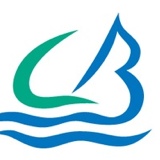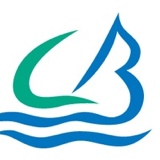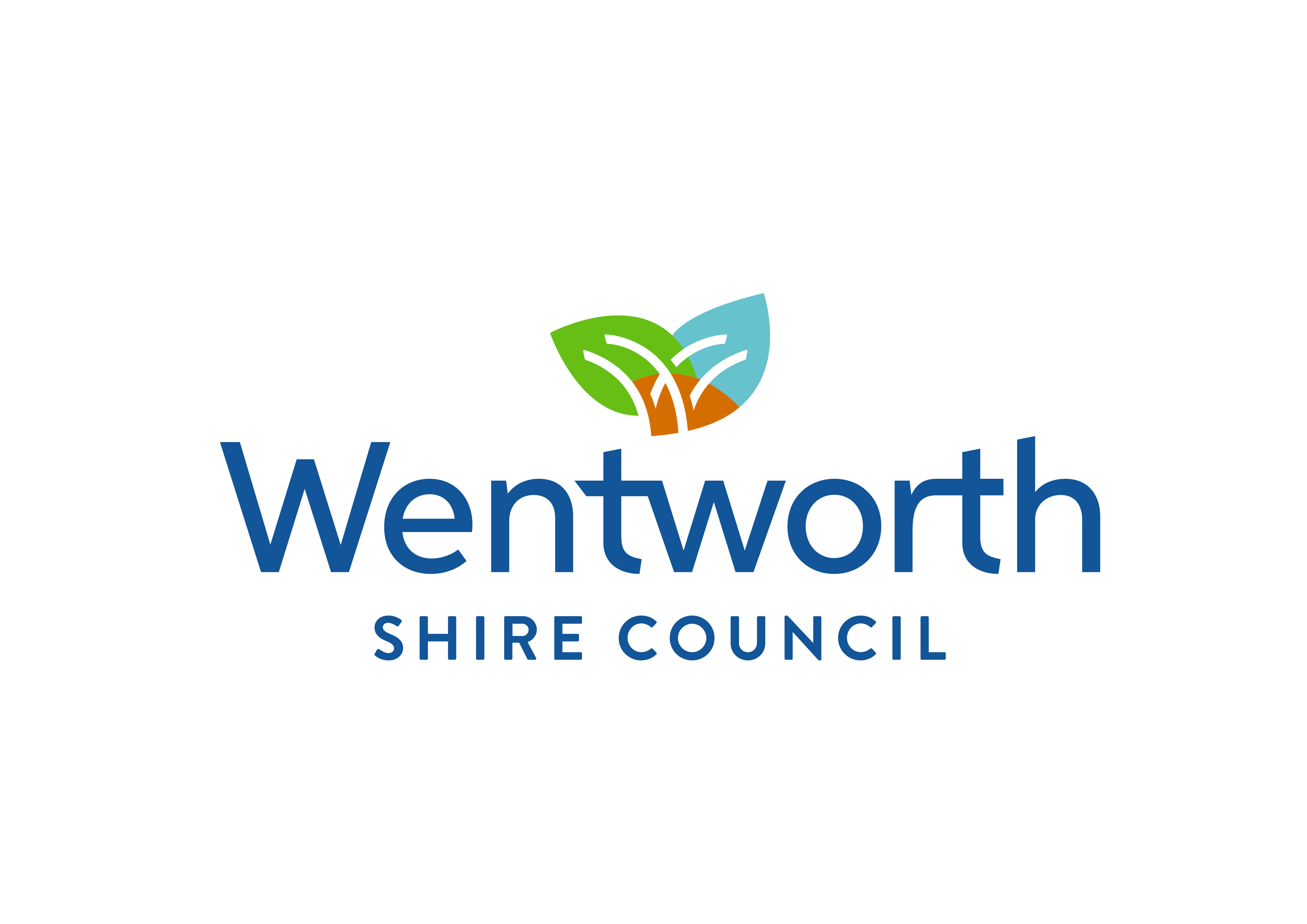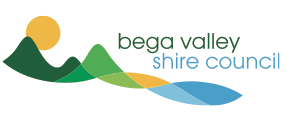Information
-
Food Shop Reference Number
-
Trading Name
-
Company Name
-
Location
-
Conducted on
-
NB: Assessment report contains findings from date/time of inspection only
Food Premise Information
-
Proprietor / Directors
-
ABN/ACN
-
Email
-
Postal Address
-
Person Interviewed
-
Phone Number
-
Food Safety Supervisor
-
Food Safety Supervisor Certificate Number
-
FSS Certification Period of Valididty
-
Is it a chain?
-
Nutritional information displayed?
General Requirements
-
2. Food Safety Supervisor is notified and FSS certificate is on the premises
-
Notify details of your Food Safety Supervisor. Ensure the Food Safety Supervisor certificate is kept on the premises.
-
Add media
-
3. Food handlers have skills and knowledge to handle food safely
-
Provide food handlers with the skills and knowledge to handle food safely.
-
Add media
-
4. No sale of food that is damaged, deteriorated or perished; no use of cracked or dirty eggs or food past use by date
-
- Ensure damaged food is not sold
- Ensure deteriorated or perished food is not sold
- Do not use cracked or dirty eggs in the preparation of food
- Do not sell food past its use by dates
-
Add media
-
1. Food business has notified details to the appropriate enforcement agency?
-
Notify your details to the NSW Food Authority by visiting www.foodnotify.nsw.gov.au
-
Add media
Food Handling Controls FSS 3.2.2 cl 5 - 12
-
5. Food protected from the possibility of contamination; food receipt, storage, display and transport
-
Protect food from the possibility of contamination:
- During receipt
- During storage
- During display
- During transport
- Wash salad vegetables and fruit
- Cover all food to prevent contamination
- Store all articles of food above ground level
- Ensure food handlers hair is restrained
-
Add media
-
6. Names and addresses are available for manufacturer, supplier or importer of food
-
Make available names and addresses for the manufacturer, suppliers or importer of food.
-
Add media
-
7. Potentially hazardous food (PHF) is under temperature control: food receipt, storage, display and transport; less than 5 degrees, above 60 degrees Celsius . Frozen food is hard frozen
-
- Store & maintain potentially hazardous foods under 5 degrees celsuis
- Store & maintain potentially hazardous foods over 60 degrees celsuis
-
Add media
-
8. Processing of foods: items thawed correctly: processed quickly; no contamination risk
-
- Proper food thawing procedures are required
- Ensure there is no risk in the processing of food
-
Add media
-
9. Cooked PHF is cooled rapidly
-
Cool potentially hazardous foods rapidly
-
Add media
-
10. Reheating of PHF is rapid - oven, stove top or microwave but not baine marie
-
Reheat Potentially Hazardous Food rapidly in oven, stove tops or microwave, not in baine- marie or pie warmers
-
Add media
-
11. Self serve food bar is supervised, has separate utensils and sneeze guard
-
- Supervise the self service food bar
- Provide separate utensils to self service food bar
- Provide sneeze guards to self service food bar
-
Add media
-
12. Food wraps and containers will not cause contamination
-
- Provide clean food wraps that will not cause contamination
- Provide clean containers that will not cause contamination
-
Add media
-
13. Food for disposal is separated from normal stock
-
Clearly mark food for disposal and keep separate form normal stock
-
Add media
Health and Hygiene FSS 3.2.2 cl 13-18
-
14. Food handlers wash and dry hands thoroughly using hand wash facilities
-
Food handlers are required to wash and dry hands thoroughly using the hand wash facilities
-
Add media
-
15. Food handlers avoid unnecessary contact with ready to eat food or food contact surfaces by use of utensils, a gloved hand, food wraps etc.
-
Avoid unnecessary contact with ready to eat foods. Use utensil or a gloved hand
-
Add media
-
16. Food handlers do not spit or smoke in food handling areas or eat over exposed food or food contact surfaces
-
- Spitting is not permitted in food handling areas
- Smoking is not permitted in food handling areas
- Do not eat over exposed food or food contact surfaces
-
Add media
-
17. Food handlers have clean clothing, waterproof covering on bandages
-
- Ensure clean & appropriate clothing is worn by the food handler
- Provide a water proof covering to bandages
-
Add media
-
18. Food handlers wash hands before commencing/recommencing work and after: using the toilet, coughing, sneezing, smoking, handling raw meat, cleaning, etc
-
- Wash hands before commencing or recommencing work
- Wash hands after using the toilet
- Wash hands after coughing
- Wash hands after sneezing
- Wash hands after smoking
- Wash hands after handling raw meat
- Wash hands after cleaning
-
Add media
-
19. Food handlers do not handle food if ill (eg vomiting, gastro)
-
Food handlers are not to handle food if they are ill
-
Add media
-
20. Hand washing facilities easily accessible and used only for washing of hands, arms and face<br>
-
- Hand washing facility must be easily accessible
- Hand washing facility must be used for intended purposed only
-
Add media
-
21. Hand washing facilities have warm running water through single spout, single use towels and soap
-
- Provide hand washing facilities with warm running water through a single spout
- Provide single use hand towels to hand wash facility
- Provide soap for use at the hand wash facility
-
Add media
Cleaning and Sanitising FSS 3.2.2 cl 19-20
-
22. Premises, fixtures, fittings and equipment maintained to an appropriate standard of cleanliness
-
- Clean and maintain the floor
- Clean and maintain the walls
- Clean the ceiling
- Maintain premise fitting to an appropriate standard of cleanliness
- Clean and maintain the garbage bin/s
- Maintain equipment to an appropriate standard of cleanliness
- Clean and maintain the cooking equipment
- Clean and maintain the exhaust hood/s
- Clean and maintain the coolroom
- Clean and maintain the refrigerator
- Clean and maintain the freezer
- Clean and maintain the exhaust filters
- Clean and maintain the meat slicer/s
- Clean and maintain the wiping cloths/linen
- Clean and maintain the dishwasher/s
- Clean and maintain the toilets
-
Add media
-
23. Food contact surfaces, eating and drinking utensils in a clean and sanitary condition/appropriate sanitising method in use (eg chemicals or dishwasher)
-
- Clean and sanitise food contact surfaces using a food grade sanitiser
- Clean and sanitise eating and drinking utensils
- Clean and maintain the preparation benches
- Clean and maintain the utensils/crockery/cutlery/glasses/cutting boards
- Use an appropriate sanitising method. Obtain a food grade sanitiser
- Ensure water temperatures for rinsing are at 77 degrees centigrade or use a chemical sanitiser to disinfect food handling untensils
-
Add media
Miscellaneous FSS 3.2.2 cl 22-23
-
24. Accurate temperature measuring device readily accessible (eg digital probe thermometer). Accurate to +/- 1 degree Celsius
-
- Provide a thermometer on the premise
- Provide a thermometer in good working order
-
Add media
-
25. Single use items protected from contamination and not reused (eg drinking straws, disposable utensils)
-
- Protect single use items from contamination. E.g. straws
- Disposable eating utensils are to be protected from contamination
- Store all cooking equipment/utensils away from public reach
-
Add media
Animal and Pests FSS 3.2.2 cl 24
-
26. Live animals not permitted in areas in which food is handled
-
Animals are not permitted in food handling area
-
Add media
-
27. Practical pest exclusion measures used (eg screens, door seals)<br>
-
Implement practical exclusion measures e.g. screens
-
Add media
-
28. Practicable measures to eradicate and prevent harbourage of pests (eg housekeeping, stock rotation, pest controller)
-
Implement practical measure to eradicate and prevent harbourage of pests
-
Add media
-
29. No signs of insect infestation or rodent activity in premises
-
- Take immediate measures to eradicate insect infestation in the premises
- Take immediate measure to eradicate rodent activity in the premises
- Seal cracks and crevices to prevent access of vermin/cockroaches
- Provide or repair insect screens to doors/windows
-
Add media
Design and Construction FSS 3.2.3
-
30. General design and construction of premises appropriate
-
Construction and design the premises to an appropriate standard
-
Add media
-
31. Adequate supply of potable water available
-
Provide an adequate supply of potable water
-
Add media
-
32. Premises has adequate sewage and waste water disposal system
-
Ensure the premises has appropriate sewage and wastewater disposal system
-
Add media
-
33. Premises has adequate storage facilities for garbage and recyclable matter
-
Provide adequate storage facility for garbage and recyclable material
-
Add media
-
34. Premises has sufficient lighting
-
Provide sufficient lighting in the premises
-
Add media
-
35. Floors are able to be effectively cleaned
-
- Repair floors to an appropriate standard to ensure it is easily cleanable
- Replace missing floor cover with approved materials
- Replace damaged floor tiles
-
Add media
-
36. Walls and ceilings are sealed and able to be effectively cleaned
-
- Effectively repair wall to an appropriate standard
- Wash and paint the walls and ceilings
- Effectively repair ceiling to an appropriate standard Replace missing wall tiles
-
Add media
-
37. Fixtures, fittings and equipment are able to be effectively cleaned and where necessary sanitised<br>
-
- Repair fixture to enable it to be effectively cleaned and sanitised
- Repair fittings to enable it to be effectively cleaned and sanitised
- Repair equipment to enable it to be effectively cleaned and sanitised
- Effectively repair or replace the fridge seal/s
- Clean and maintain the light fitting/s
- Effectively repair the freezer/s
- Effectively repair the coolroom/s temp
-
Add media
-
38. Adequate ventilation is provided within the premises
-
- Provide adequate ventilation within the premise by increasing the size of the commercial exhaust system
- Install a commercial exhaust system to prevent the accumulation of smoke, steam and vapours within the food premises
- Ensure the cooking equipment lies at least 150mm the edge of the canopy of the exhaust ventilation system
-
Add media
-
39. Premises has adequate storage facilities (eg chemicals)
-
- Provide adequate storage facility for staff personal belongings
- Provide a designated chemical storage area
- Store chemicals away from food
- Remove items not related to food preparation
- Provide separate areas for staff clothing and personal items
-
Add media
Maintenance FSS 3.2.2 cl 21
-
40. Premises, fixtures, fittings and equipment in a good state of repair and working order
-
- Make good structural defect in wall
- Make good structural defect in floor
- Make good structural defect in ceiling
- Ensure fixture is in good working order
- Ensure fitting is in good working order
- Ensure equipment is in good working order
- Ensure fixture is in good state of repair
- Ensure fitting is in a good state of repair
- Ensure equipment is in good state of repair
-
Add media
-
41. No chipped, broken or cracked eating or drinking utensils observed
-
Refrain use of chipped eating or drinking utensils
-
Add media
Labelling FSC Chapter 1
-
42. Food labelling complies with the Food Standards Code
-
- Ensure food supplied comply with food labelling requirements
- Date mark food in coolroom
-
Add media
Total Points
-
Risk Category
-
Food Business Grade
-
0-3 Points = 5 Stars
4-8 Points = 4 Stars
9-15 Points = 3 Stars
Above 15 Points - No grade awarded -
SOD Participant
Further Action
-
Further action required
- Nil
- Reinspection
- Warning letter
- Improvement Notice
- Prohibition Order
- Penalty Notice
- Other
- Pending
-
Comments
Fees to be Charged
-
Inspection fee
-
Minutes
-
Administration fee
I have read this report and understand the contents.
-
Owner / Employee signature
-
Officers Name
-
Wagga Wagga City Council
-
Officers Signature
-
NB: Assessment report contains findings from date/time of inspection only
Explanatory Notes and Definitions (Food Standards Code Ch3 standards 3.2.2 and 3.2.3)
-
This assessment report is based on guidance in the Safe Food Australia (2001) publication: A Guide to the Food Safety Standards. The Guide should be consulted if assistance with interpretation of the food safety standards is required. The assessment is set up as a checklist. In some cases an item will be supported with a list in italics of areas where compliance is required. It might not be possible to observe all the areas in a single inspection. Despite the presence of a list each item is a single issue of compliance. inspection are: inadequate cooling & cold holding temperatures; food prepared ahead of planned service; inadequate hot holding temperatures; poor personal hygiene & infected food handlers; inadequate reheating and inadequate cleaning of equipment.
-
5.Protection from likely contamination includes appropriately covering food so that it is protected from potential contamination sources and includes keeping ready to eat foods separated from raw foods.
-
7.Potentially hazardous food is food that has to be kept at certain temperatures to minimize the growth of any pathogenic micro-organisms that may be present in the food or to prevent the formation of toxins in the food. Examples of potentially hazardous food includes meat, seafood, dairy and foods such as salads and some cut fruits.
-
7.Temperature control means maintaining potentially hazardous food at a temperature of: a.5oC or below or b.60oC or above or c.another temperature if the food business demonstrates that maintenance of the food at this temperature for the period of time for which it will be maintained, will not adversely affect the microbiological safety of the food.
-
9.A food business must when cooling cooked potentially hazardous food, cool the food: a.within two hours - from 60oC to 21oC; and b.within a further four hours - from 21oC to 5oC.
-
10.A food business must when reheating previously cooked and cooled potentially hazardous food to hold it hot, use a process that rapidly heats the food to a temperature of 60oC or above.
-
11.A food business must, when displaying unpackaged ready to eat food for self service: a.ensure the display of food is effectively supervised so that any food that is contaminated by a customer or is likely to have been contaminated is removed from display without delay b.provide separate serving utensils for each food or other dispensing methods that minimise the likelihood of the food being contaminated; and c.provide protective barriers that minimise the likelihood of contamination by customers.
-
14.Thorough hand washing includes using the designated hand washing facility to wash hands, fingers and wrists using warm water and soap for a recommended 15 seconds, rinsing hands under warm water for a recommended 15 seconds and drying thoroughly on single use towel or air dryer
-
18.A food handler must wash his or her hands whenever their hands are likely to be a source of contamination of food. This includes: before working with ready to eat food after handling raw food immediately after using the toilet before commencing or recommencing handling food immediately after smoking, coughing, sneezing, using a handkerchief or tissue, eating, drinking or using tobacco after touching his or her hair, scalp or a body opening.
-
19.A food business must ensure the following persons do not engage in the handling of food for the food business where there is a reasonable likelihood of food contamination: a.a person known to be suffering from a food-borne disease, or who is a carrier of a food-borne disease b.a person known or reasonably suspected to have a symptom that may indicate he or she is suffering from a foodborne disease.
-
22.Food premises and fixtures, fittings and equipment must be maintained to a standard of cleanliness where there is no accumulation of: a.garbage, except in garbage containers b.recycled matter, except in containers c.food waste d.dirt e.grease f.other visible matter
-
23.Clean and Sanitary condition means a surface or utensil is: a.clean b.has had applied to it heat and/or chemicals or other process so that the number of microorganisms has been reduced to a safe level
-
30. General requirements for design and construction of food premises must; (a) be appropriate for the activities for which the premises are used; (b) provide adequate space; (c) permit effective cleaning and, if necessary, sanitising and (d) to the extent that is practicable exclude dirt, dust, fumes, smoke, not permit the entry or harbourage of pests. 31. Adequate supply of potable water means water that is acceptable for human consumption and available at an adequate volume, pressure and temperature for hand washing, cleaning and food processing requirements. 33. Adequate storage facilities for garbage and recyclable matter means facilities that will contain the volume and types of garbage and recyclable material produced by the food business and not provide a breeding ground for pests and be capable of being easily and effectively cleaned. and to clearly see food and equipment they are handling. 38. Adequate ventilation (natural or mechanical) must be provided to remove fumes, smoke, steam and vapours from the food premises.
-
31.Adequate supply of potable water means water that is acceptable for human consumption and available at an adequate volume, pressure and temperature for hand washing, cleaning and food processing requirements.
-
33.Adequate storage facilities for garbage and recyclable matter means facilities that will contain the volume and types of garbage and recyclable material produced by the food business and not provide a breeding ground for pests and be capable of being easily and effectively cleaned.
-
34.Lighting must be sufficient to enable food handlers to readily see whether areas or equipment are clean, to detect signs of pests and to clearly see food and equipment they are handling.
-
38.Adequate ventilation (natural or mechanical (natural or mechanical) must be provided to remove fumes, smoke, steam and vapours from the food premises.












